These melt-in-your-mouth Sourdough Biscuits are made with “wild yeast” instead of using baking soda or baking powder as a rising agent.
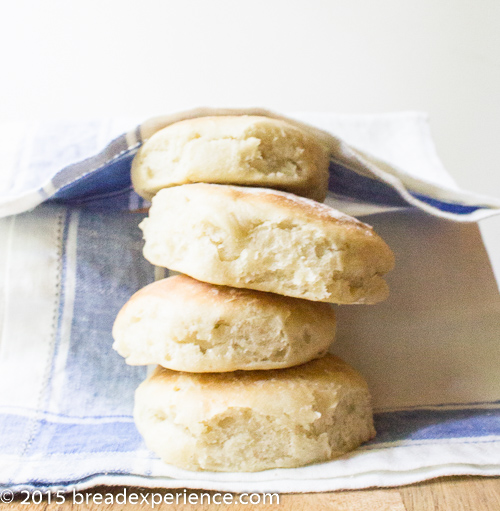
When I learned the challenge for the Sourdough Surprises Baking Group for May was to make biscuits, I knew I didn’t want to miss this one. I have been a biscuit lover for as long as I can remember. To me, nothing says “Southern” more than biscuits.
I should mention; however, that although I adore biscuits, I have not always made good biscuits. Making soft and fluffy biscuits that rise to perfection can be a tricky proposition at best.
A few years ago, I decided to get over my biscuit-making phobia and learn how to make biscuits properly like my Southern grandmothers did. To do that, I practiced biscuit-making whenever the opportunity presented itself. I’m still working on perfecting this skill, but I’m starting to get the hang of it.
I’ve been researching and playing around with different types of biscuits for a while so making sourdough biscuits sounded like a fabulous idea. You might not think sourdough biscuits qualify as Southern-style, but there are Southern biscuits made with yeast so these just might qualify as riz biscuits, which means “a biscuit that contains yeast.”
In my continued research, I recently discovered some rules for making biscuits. Just as you would use baker’s percentages in a formula for artisan loaves, you can use these rules for making biscuits. Armed with these rules, I set out to make some delightful morsels.
I started with whole wheat sourdough biscuits. Why would I choose whole wheat since it isn’t known for producing fluffy and light anything? The simple reason is that I procured some soft Georgia wheat when I was in Asheville, NC a few weeks ago, and I just had to use it. I mean biscuits made in Georgia from Georgia wheat, the draw was just too strong.
So I milled the flour and sifted out the bran to make it lighter. I substituted sourdough for about 28% (1/2 cup) of the flour/water. Since they were made with fresh whole wheat flour, these biscuits had a delicious and sweet wheaty flavor. They were not tall and fluffy, but for whole wheat, they were really good.
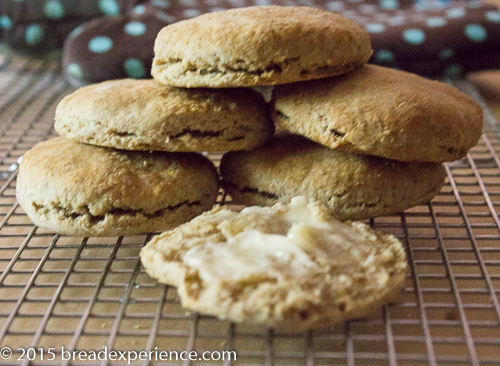
I will make the whole wheat version again, but I will probably bump up the amount of sourdough used. I also baked them immediately after shaping them and didn’t let them rise so perhaps that’s another enhancement that could be made.
For the second batch, I used all white flour so I could taste and feel the difference and get the process down. I haven’t been working with white flour for a while, but these biscuits include a greater proportion of sourdough so I decided to go with it.
I had consulted some of my sources for making sourdough biscuits and those recipes included a good bit more sourdough and no additional liquid. So instead of including 20-30% sourdough as you would other types of breads (and as I did for the first batch), I used 2 cups of sourdough and no milk. I added a bit more flour and used butter instead of shortening or lard and omitted the baking powder. I did add some baking soda to neutralize the sourdough tang.
The result was soft and fluffy biscuits. My son said he didn’t notice any sourdough at all. That’s because I neutralized it.
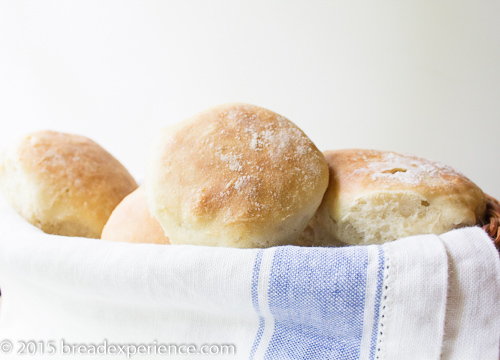
Sourdough Biscuits
Adapted from Classic Sourdoughs – A Hand Baker’s Handbook by Ed Wood and Jean Wood and Biscuit Bliss 101 Foolproof Recipes for Fresh and Fluffy Biscuits in Just Minutes by James Villas
Makes: 14-16 Biscuits
Ingredients:
- 1 1/2 cups all-purpose flour, more for sprinkling
- 2 cups fed sourdough *
- 1/2 cup butter, chilled and cubed **
- 1 Tbsp. sugar
- 1 tsp. salt
- 1 tsp. baking soda
* For extra rising power, you can add a couple of teaspoons of baking powder, but if you have a mature starter, you shouldn’t need it. ** If you prefer flaky biscuits, lard or shortening can be substituted for some or all of the butter. Directions:
In a large bowl, combine the flour, sugar, salt, and baking soda. Using a pastry blender, fork, or your fingers, cut the chilled butter into the flour mixture until it forms a mealy texture.
Add the sourdough starter and mix thoroughly with a fork. The dough should be soft and slightly sticky and just starting to pull away from the sides of the bowl. Add in a little extra flour (or milk) to reach the desired consistency.
Transfer the dough to a lightly floured surface and knead it gently about 4 or 5 times until the dough is barely sticky. Add in a little extra flour if needed but try not to add any more than necessary.
Pat or roll out the dough about 1/2 inch thick and cut the biscuits using a 2-inch biscuit cutter. Patting the biscuits instead of rolling them and using a straight cut without twisting the biscuit cutter is supposed to help get a better rise.
Place the rounds close together (about 1/2-inch apart) on a rimless baking sheet. Using a rimless baking sheet or only one rim is supposed to help with even heating and placing them close together keeps the inside edges soft.
Sprinkle the tops lightly with flour and cover with a kitchen towel. Let them proof for 45 minutes to an hour at warm room temperature.
Preheat the oven to 425 degrees F. Bake the biscuits in the upper third of the oven for 12 to 15 minutes, or until golden brown. Watch them carefully to make sure they don’t brown on the bottom. Alternately, bake them at 375 degrees F. for 20 to 25 minutes.
Serve hot with butter and/or jam or honey.

My son and I enjoyed these biscuits. I thought the flavor was good even with white flour. They are so soft and fluffy but as with any biscuit, they are best eaten fresh. If you do end up with leftovers, enjoy them the next day toasted with butter.
Happy Baking!
Cathy
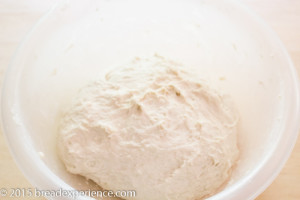
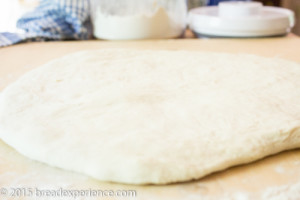
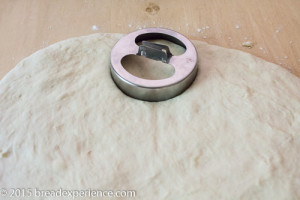
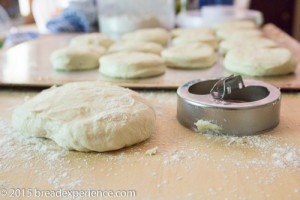
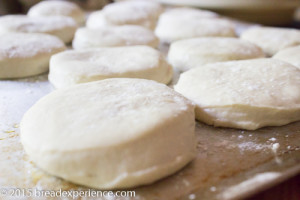
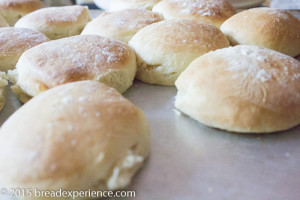
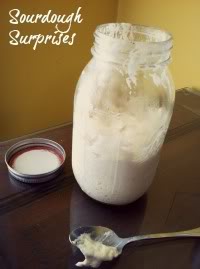
Jenni says
Lovely biscuits! You did a fabulous job, both the wheat and white flour look awesome. Those white floured ones are so soft and fluffy looking! Thanks for joining us!
Cathy says
Thank you Jenni! This was a great choice. Thank you for hosting the Sourdough Surprises.
Kelster says
I like both your biscuits! I’m still working on perfecting biscuits. One day I’ll get there!